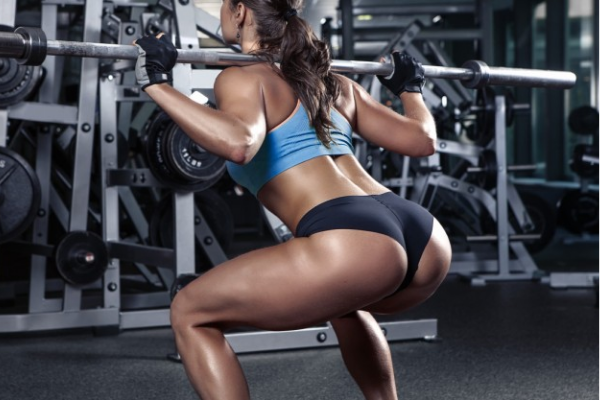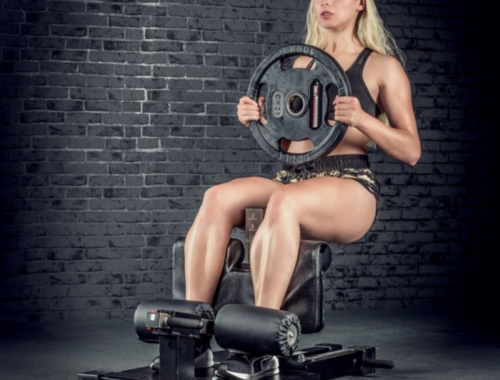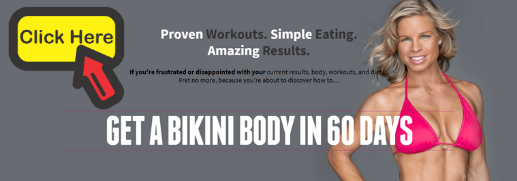
The best exercise for Glutes and Legs: THE SQUATS
Contents
This is one of the most important exercises that exist, since it works a large part of muscle groups and that makes it the ideal to burn calories, it is also the best exercise to sculpt beautiful legs and firm glutes.
Squat theory
Squats are essential for well-being. Squats can improve your athleticism significantly and strengthen your hips, back, and knees in old age.
Squats are not harmful to the knees, and they also serve incredibly as rehabilitation for injured or delicate knees. In fact, if you don’t squat, your knees will be unhealthy regardless of pain and discomfort. The same thing happens with the hips and the back.
Squats are not the creation of some trainer in the same way that the hiccup or the sneeze have been. It is essential, natural, functional and it is part of being.
At the bottom of the movement, squats are a natural human posture (chairs are not part of our biological makeup), and getting up from that position is the safest biomechanical method by which we stand. This movement is neither unreal nor artificial.
Most of the world’s inhabitants do not sit in chairs but squats. There are meals, ceremonies, conversations, meetings, and physiological needs that are done without the use of chairs or seats. Only in the industrialized world do we have the need to use chairs, sofas, benches and stools. This generates the loss of functionality that contributes substantially to deterioration.
Often we find individuals whose doctors or chiropractors have contraindicated squats. In almost all cases, it is ignorance on the part of the professional. When a doctor who disagrees with squats is asked, «What method should your patient use to get up from the toilet?» He is stunned.
Similarly, we know from trainers and healthcare professionals who suggest that the knee should not be flexed more than 90 degrees. It’s fun to ask those who hold these opinions to sit on the floor with their legs spread out in front, and to get up without bending their knees more than 90 degrees. It cannot be done unless the movement is somewhat artificial. The truth is that getting up from the floor involves much more force in at least one of the knees than when we do squats.
We believe that those who contraindicate squats are repeating a rumor that they heard in the gym or on television, or that during their clinical practice they have encountered people who have been injured by squatting incorrectly.
It is absolutely possible to injure yourself if you squat incorrectly, but it is also very easy to squat at as safe a level as walking. In the article we explain how it is done.
In the athletic field, squats are the quintessential hip extension exercise, and hip extension is the foundation of any well-performed human movement. Firmness and control of hip extension is certainly necessary and sufficient for elite athleticism. «Necessary» because without the firm and controlled extension of the hip, you do not exercise anywhere near potential. «Enough» given that those with the ability to open the hips considerably could also run, jump, throw and hit with incredible force.
Second, but not least, squats are among those exercises that provide a strong neuroendocrine response. This benefit is reason enough to include exercise in your program.
How to perform squats
Instructions for performing quality squats are detailed below.
1. Start with feet shoulder width apart, toes slightly outward.
2. Keep your head up, looking just above parallel.
3. Do not lower your gaze; the ground is in peripheral vision only.
4. Accentuate the normal arch of the lumbar curve and then remove the excessive arch with the abdominals.
5. Keep the middle torso very firm.
6. Bring the glutes back and down.
7. The knees follow the line of the foot.
8. The knees should not rotate into the foot.
9. Maintain as much pressure as possible on the heels.
10. Separate from the spheres of the sole of the foot.
11. Delay forward knee movement as much as possible.
12. Raise and rotate arms up and out when descending.
13. Keep your torso elongated.
14. Move your hands away from your buttocks as much as possible.
15. In profile, the ear does not move forward during squats, it goes straight down.
16. Do not sink but descend with the hip flexors.
17. Do not collapse the lumbar curve when reaching the floor.
18. Stop when the hip crease is below the knee, breaking parallel with the thighs.
19. Squeeze your glutes and hamstrings and move up without leaning forward or losing your balance.
20. Return by the same path as when descending.
21. Use every part of the musculature that is possible; there is no part of the body that does not work.
22. When ascending, without moving your feet, press your feet out as if you were trying to get off the ground.
23. At the top of the movement, get as high as possible.
Common mistakes or wrong squat anatomy
Free squats
All of our athletes begin squats with the “free squat”, that is, without any weight other than the weight of the body. As for the term, we mean «squats» when we talk about unloaded body weight, just the squat. When we want to refer to a weighted squat, we will use the term back squat, front squat, or snatch squat, referring to the exercise that involves a load. The safety and effectiveness of training with the snatch, back or front squats, before mastering the weightless variant, delays athletic potential.
When do you get to master the squat? That’s a good question. You could say that squats are mastered when technique and performance are superior. In other words, when none of the 23 points mentioned above is performed with deficiencies and when it is possible to perform multiple repetitions quickly. Our preferred rule of thumb for multiple fast reps would be the Tabata squat (20 seconds work / 10 seconds rest, 8 times), with the weakest interval of the eight between 18-20 reps. No misunderstandings should be generated. We aim for 18 to 20 perfect squats in twenty seconds, rest for ten, and repeat seven more times for a total of eight intervals.
The most common errors to detect are weakness in the lumbar curve at the bottom of the movement, not breaking the parallel plane with the thighs, hunching the chest and shoulders, looking down, lifting the heels, and not extending the hips fully in the top of the movement. Don’t think about squats with weights until you correct all these mistakes.
A relatively small angle of hip extension (flat back) is an indicator of weak or entry level squats, caused by weakness in the hip extensors, although it is not considered an error in itself, as long as the lumbar spine is in extension.
Free Squat Technique
- Arched back
- Looking forward
- Weight over heels
- Good depth below parallel
- High chest
- Medium firm torso

Causes of wrong squats
1. Weak glutes / hamstrings. The glutes and hamstrings are responsible for the energetic extension of the hip, which is key to athletic performance.
2. Poor activation, weak control, lack of awareness of glutes and hamstrings. The road to effective and firm hip extension is a three to five year odyssey for most athletes.
3. Attempt to squat with quadriceps. The mastery of leg extension over hip extension is a major obstacle to excellent performance for athletes.
4. Inflexibility. It is not possible to work the movement with a marked absence of flexibility in the hamstrings. In this way, lumbar extension is lost and lumbar flexion is switched; the worst mistake of all.
5. Deficiency and deviation of concentration. It is not achieved by chance. It takes a lot of effort. The more they practice squats, the more they understand its complexity.
Therapies for common mistakes
Support Bars: Grab a bar positioned higher and closer than your normal reach when you are in the lowest part of the squat, then position yourself down with your chest, head, hands, arms, shoulders, and back more higher than normal. Find your balance, let go, repeat closer and higher, etc. Raise the squats (raise your head, chest, shoulders, and torso), placing more weight on your heels and on your glutes and hamstrings. This immediately promotes a firm posture at the bottom of the movement, from which it is possible to feel the forces necessary to balance in good posture. This is a reasonable shoulder stretch but not nearly as good as snatch squats. It is a very effective therapy.
Box Squats: Squat into a 10-inch box, rest low without changing posture, then compress and rise without rocking forward. Keep the posture aligned down in the perfect move to the Westside Barbell Club. This is a classic piece of technology perfected at the Westside Barbell Club. Visit the site and the links.
Bottom to bottom: Stay down and come up to full extension and quickly descend, staying much longer at the bottom than at the top. For example, sit down for five minutes, come up to full extension once every five seconds, eg, sixty repetitions. Many will avoid reaching down, like the plague. They will want to get down, stay down, and learn to enjoy it.
Snatch squats: Hold a broomstick, keeping width directly overhead, arms locked. Form a triangle with your arms and the stick should be perpendicular to as you squat. Good shoulder stretch and squats with weights. With weight, the exercise requires good balance and posture, otherwise the loads will be unmanageable. Snatch squats are a quick corrective for ungainly technique. If the shoulders are too tight, the movement will give an instant diagnosis. Imagine entering through a door, if your arms drop, you can hit the door. Raise your arms, head, chest, back, and hips high enough to get up and down without hitting the door. Over time, try to move your feet closer and closer to the door without hitting it. The base of the broomstick is essential for learning the snatch, the fastest lift in the world.
String Touch: Hang something from a string, such as a tennis ball or curled head, as high as possible, and touch it on each repetition. Alternate hands. This is a very good Tabata exercise. This exercise will lower the Tabata Interval score (fewer squats in any of the eight intervals) for those who cannot squat due to not fully extending the hips.
Diego Gallardo
IFBB Personal Trainer & Advanced Nutrition Specialist
Source: CrossFit Journal

The Secret of Six Pack Abs
También te puede interesar

SISSY SQUAT WITH MACHINE OR DISCS
diciembre 15, 2020
The Right Way to Crunch, Get Your Six Pack
marzo 28, 2020




